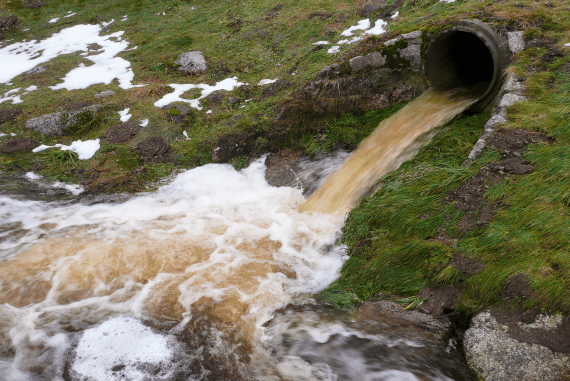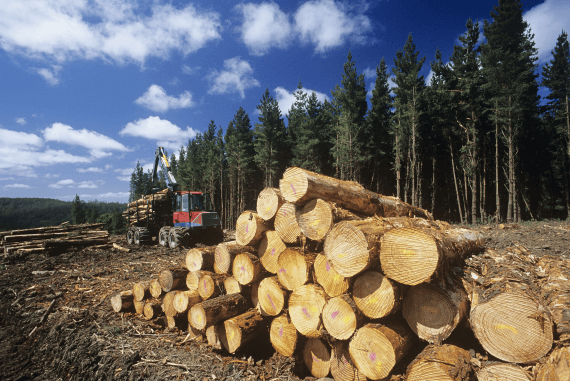- Home ››
- Health and Safety Training ››
- Environmental Health and Safety ››
- Sensitivity of Surroundings
Environmental Health and Safety - Sensitivity of Surroundings
Introduction

When creating an environmental safety plan, or considering what environmental health and safety training needs to be provided for employees, a key factor to take into account has to be the sensitivity of the surrounding area. The types of creatures and other characteristics of the environment in the locality around the place of work in question will, to a large extent, determine what a company can and cannot do in terms of affecting it.
In many countries, legislation and regulations will exist which will influence what a business can do. It may be the case, however, that in a certain jurisdiction, legislation either does not exist, or does not fully prevent environmental damage from a company. In these situations, it is up to the business itself to take responsibility upon itself.
For example, a business that is situated in an area where rare and endangered species of bird or marine life are present will have to be extremely careful about what hazardous substances it releases and in what quantities, both deliberately and accidentally, into the surrounding land and watercourses. Of course, every business should take steps to prevent such an occurrence, through control measures and a well-trained workforce in environmental matters, but those located in a sensitive area can cause a catastrophic environmental disaster from even just a small release.
It is not just birds and marine life which need to be protected from harm. Plants and flowers, some of which may also be rare, can be greatly affected through pollution and other forms of environmental damage. Not only this, but sometimes the ground can be toxic to plant life for many years after the event. An example of how ground can be contaminated for years can be found in the Buncefield Fire example in the article "Fire Fighting and Environmental Damage".
Environmental training and awareness therefore considers all forms of life and aspects of the environment when it comes to protection, not just focusing on creatures but indeed any form of life which can be killed, made ill or otherwise adversely affected by the activities of businesses.
Not Just Permanent Workplaces
The activities of some corporations are not just restricted to their permanent places of business. Many industries require workers to go out and about, sometimes to remote locations that have been lucky enough to stay relatively untouched by humans.
It can be difficult enough for companies who operate from a permanent location to put control measures in place to prevent damaging the environment, which means it is especially tricky for those who are always operating in different places, as permanent and fixed safeguards cannot be put in place.
Example: Logging Companies


A prime example of such firms includes logging companies which sometimes have to go to remote, unspoilt environments and conduct the logging without disturbing or causing damage to the local ecosystem. Obviously this is quite a challenge, where noisy chainsaws are being operated and possibly large crashing sounds as trees are felled (or loud helicopters when heli-logging is involved), but permits will only be granted on the proviso that certain noise and other disruption is kept within specified limits.
A particular location which comes to mind is logging in Alaska, where the pristine and unspoilt landscape contains many large trees that are highly sought after. Whilst stringent regulations need to be adhered to, there is always the potential for damage to streams and other habitats in the forest no matter how much care and effort is put into causing as little disturbance and adverse effect upon the ecosystem.
Government Legislation and Regulations
The managers of a lot of companies will take it upon themselves to take precautions and put in place necessary safeguards to protect the environment from the activities of their business. However, many will not have such a moral compass or sense of environmental responsibility, and will try and get away with whatever they can if it means extra profit.
To combat this, national governments and local councils introduce legislation and initiatives to force businesses to prevent damage to the local environment and wildlife.
Any companies, or even the managers/directors themselves, can be punished severely if damage to the environment were to occur. This can be in the form of a monetary fine or, in particularly serious breaches, managers and directors could end up in prison. This is a valuable lesson to those taking on a new role as a manager that they need to learn and be aware of their extra levels of responsibility and accountability.
Removal of Waste
It would be rare for any activity not to produce waste of some sort. Even if it did, the people performing the tasks are likely end up with rubbish such as the packaging from their lunches! Materials such as plastic can potentially be fatal to any wildlife that consumes it, not to mention looking unsightly lying on the ground.
Processes can produce hazardous waste products, which will need to be cleared away and disposed of correctly instead of being left behind on the site.
Conclusion
All companies, no matter what their industry or where there operations are taking place, need to take steps to prevent damage to the surrounding environment. Whilst some will be located or engaged in activities which are situated in areas of particular natural beauty and/or containing highly-sensitive and rare species of plant or animal life, all organisations need to take steps and put control measures in place to reduce and prevent the harm they cause to the environment. This can include steps such as more rigorous control systems and an increased amount of environmental awareness training.
Environmental Awareness in Health and Safety Courses
The importance of employees being made aware of their environmental responsibilities, and how their actions (as well as those of the company) can adversely impact the environment has led to the increase in popularity of courses like the NEBOSH Environmental Certificate, as well as being present as an element on the NEBOSH General Certificate also. Please click on the "Health & Safety Training" tab at the top of the page and click on a NEBOSH course title to see the course outlines for these.

